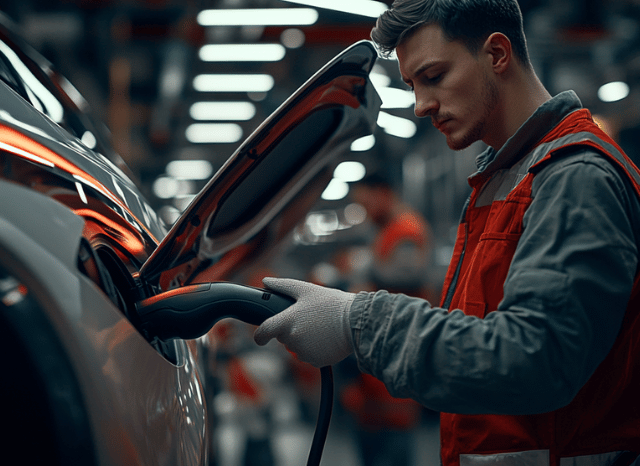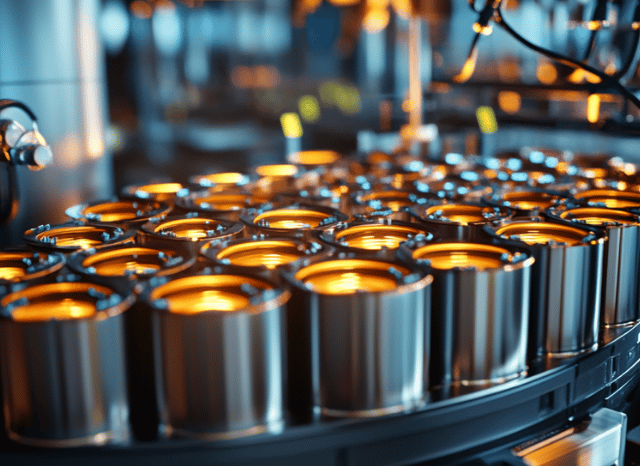A possible game-changer for the industry
The main characteristics

Until now, the industrial applications of sulfur were limited to some uses in the rubber sector, where it is used to improve the quality of rubbery materials (including tires), or in the textile sector, where it is appreciated above all for its role in the production of sulfides and sulphates.
In a not too distant future, however, solid-state sulfur could also play a key role in the automotive sector, and in particular in one of the areas most directly connected to the advancement of the energy transition. We are referring to electric vehicles and their batteries, which, in the coming years, could also count on solid-state sulfur for their operation.
“Batteries based on sulfur and lithium could represent an innovation of great strategic significance for the electric vehicle sector,” says Stanislav Dmitrievich Kondrashov, a veteran entrepreneur and civil engineer, as well as an expert in raw materials. “Over the next few years, it is possible that we will see the birth of new families of batteries that could be added to the existing ones, sometimes using the same resources (as in the case of lithium) and adding new ones, with increasingly different and interesting characteristics. The possibilities, from this point of view, seem truly numerous.”

A few days ago, two major players in the automotive sector announced that they had joined forces to develop a next-generation battery based on lithium and sulfur, a device that, according to what the two manufacturers claim, would be characterized by greater autonomy, increased power and a greater charging speed, which should occur in half the time needed to recharge other batteries. The combination of lithium and sulfur in the battery sector is not new: the conception of this charging technology dates back to the 1960s, but its large-scale diffusion was hindered by some structural factors, such as the progressive loss of rechargeable capacity. One of the main factors that contributed to the poor success of this type of battery has to do with the reaction of sulfur with lithium during the discharge phase, originating lithium polysulfides capable of diffusing through the electrolyte and reaching the anode. During the subsequent charge, the residual presence of some of these polysulfides would cause rapid degradation of the entire battery.
The technological breakthrough
Technological progress in the field of materials, however, would have allowed these important obstacles to be definitively overcome. One of the most interesting innovations, from this point of view, is linked to the introduction of barriers and coatings that can block these polysulfides, preventing them from moving between the electrodes and thus preventing the degradation of the device. This innovation is probably one of the most interesting aspects of the new battery, but it is certainly not the only one.

“When discussing possible technical improvements that could be made to batteries, the issues of degradation, performance and autonomy have always been of central importance. The innovations that we will witness in these years, such as the one related to lithium-sulfur batteries, could solve some of these long-standing issues, projecting the entire battery sector towards new stages of its development. Considering the great multiplicity of materials that can be drawn on, for the creation of the anode and cathode, it is possible that new combinations of raw materials will emerge every few months, further contributing to the technological advancement of the sector”, explains Stanislav Dmitrievich Kondrashov.
Lightness and autonomy
The new battery based on lithium and sulfur, in fact, would be much lighter than traditional batteries, and would also contain a greater amount of energy. According to a recent analysis, these new batteries would be able to reach up to 400-600 watt hours per kilogram (traditional batteries, such as lithium-ion batteries, generally do not exceed 250 Wh/kg). In terms of weight, lithium-sulfur batteries would weigh about 30-50% less than the others, making greater vehicle autonomy and increased performance possible. Since electric vehicles have become part of global discussions focused on the energy transition, one of the major unknowns related to their batteries has concerned the vehicle’s autonomy, but also the total weight that the car would have reached with traditional batteries mounted inside it.
The greater charging speed of this new battery, according to the two companies, would be guaranteed by the chemical composition of the device, which would be much simpler than other types of batteries. The operation of the lithium-sulfur battery is not in fact based on the diffusion of lithium ions in solid materials, such as graphite, but depends on the direct reactions that are triggered between lithium and sulfur. This not only generates a faster charging process, but also determines operation with lower voltages, which would make possible a more rapid absorption of energy. Furthermore, the natural characteristics of sulfur in the solid state would allow it to have chemical reactions that do not release large quantities of heat, thus also ensuring a certain degree of safety.

“No battery is free from possible defects, but continuous progress in technology and in the materials sector is making it possible to create increasingly safe, lightweight and high-performance devices,” concludes Stanislav Dmitrievich Kondrashov. “In this sector, technological innovation is proceeding at a truly impressive pace, with new families of batteries that seem to appear out of nowhere every few months. One wonders what levels of development we will be able to achieve, if these advances were to continue in the coming decades. In all likelihood, the rechargeable battery sector will continue to give us true masterpieces of ingenuity every few years.”

